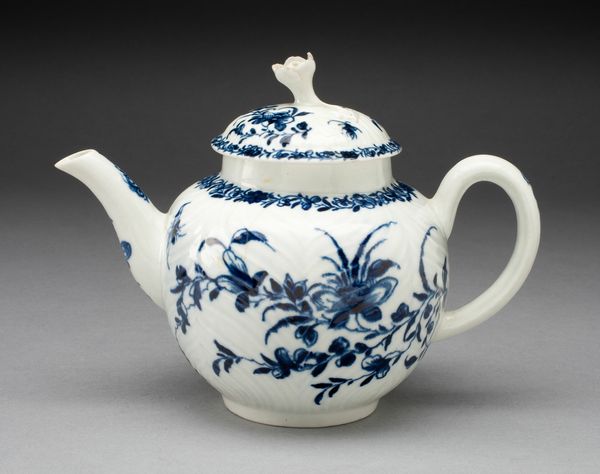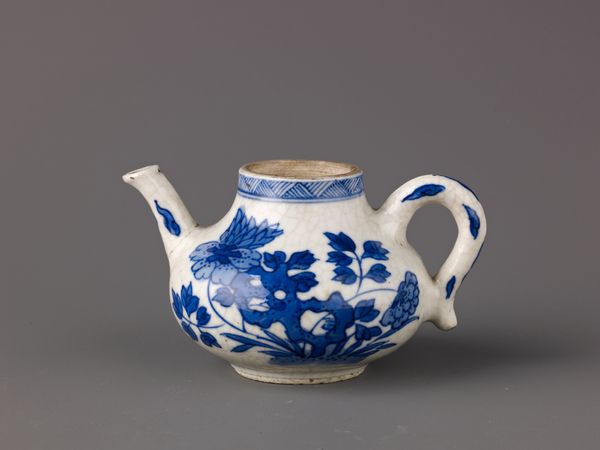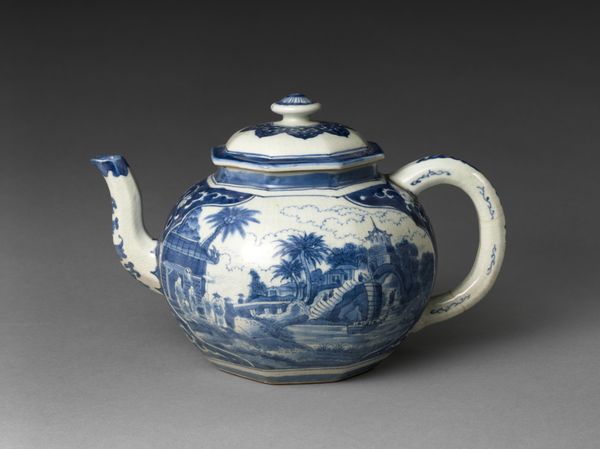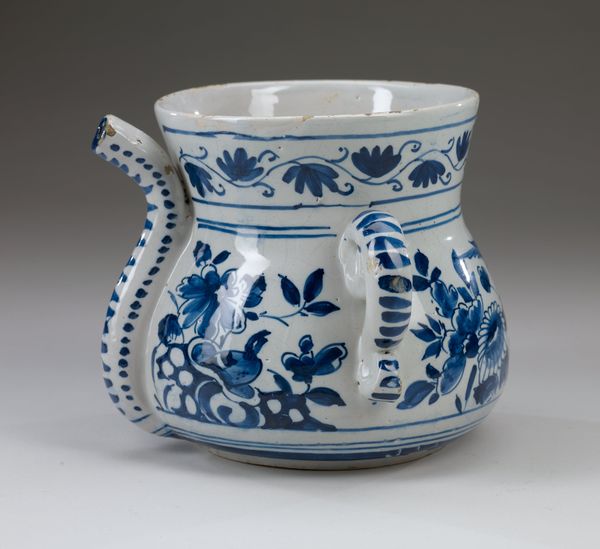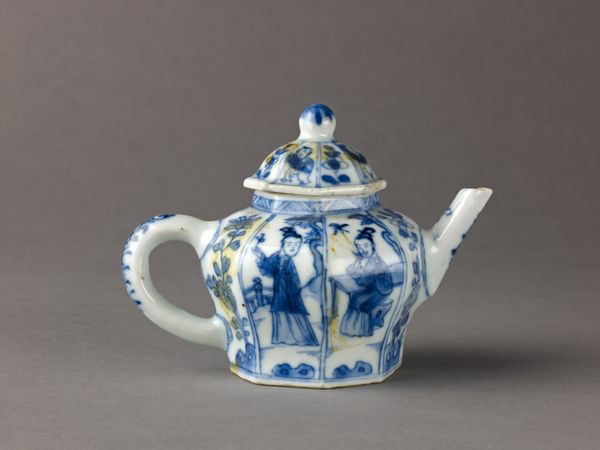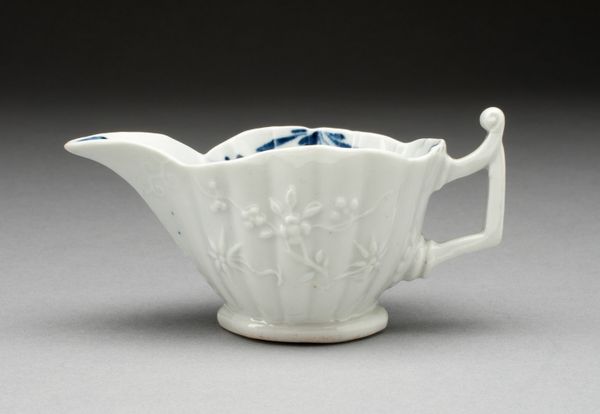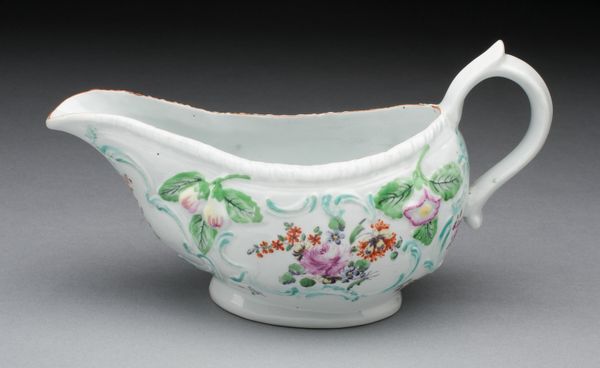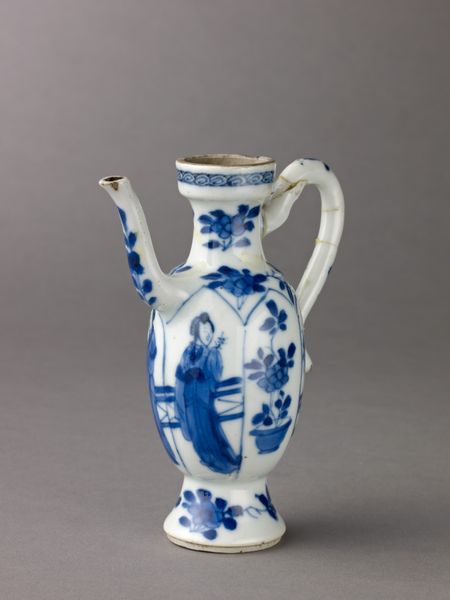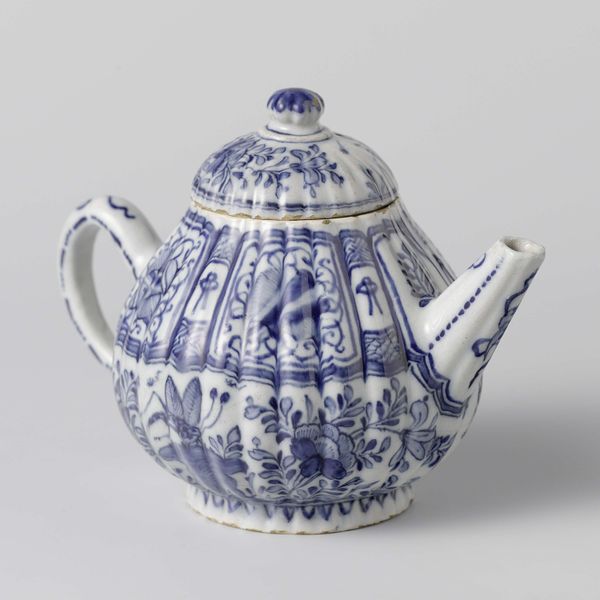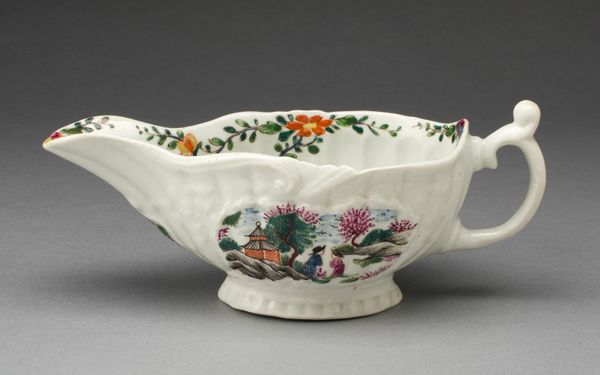
ceramic, porcelain
#
ceramic
#
porcelain
#
ceramic
#
decorative-art
Dimensions: 8.1 × 18.3 cm (3 13/16 × 7 3/16 in.)
Copyright: Public Domain
Curator: Here we have an elegant sauceboat created by the Bow Porcelain Factory, sometime between 1755 and 1765. It resides here at The Art Institute of Chicago. The piece is porcelain, showcasing the ceramic artistry of the mid-18th century. Editor: It’s incredibly charming. The white porcelain paired with the blue decoration is a classic, but it gives off a distinct sense of formal dinners and ritual, almost a theatrical presentation of food. Curator: I see it from a material perspective. This object speaks volumes about production methods, doesn't it? The process of creating porcelain—sourcing the materials, the factory conditions, the division of labor... Editor: Absolutely. The choice of floral patterns isn’t arbitrary either. In the 18th century, botanical imagery carried immense weight. The leaves depicted look very much like burdock, but their idealized form represents the broader symbolism of nature's bounty and the fashionable embrace of chinoiserie at the time. The motifs act almost like a crest. Curator: Precisely, and let's consider the materiality more closely. Porcelain, during this era, was highly prized—a status symbol. To possess such a finely crafted object signals not just wealth, but participation in a broader network of global trade. Editor: Indeed. The blue decorations, they could reference willow patterns that gained traction in the 18th century, adding to the exotic aesthetic many yearned to obtain. It's not merely a sauceboat; it’s a canvas of aspirations, painted with potent symbols. It provides not only utility but cultural cachet. Curator: I wonder about the makers, the individuals who crafted this. Porcelain production involved many artisans. What were their lives like, and how did their labor manifest in the final product? The handle, for instance; that smooth curve reflects the potter's hand, doesn’t it? Editor: Yes, and the handle also invites one to consider use and interaction; it’s meant to be held and poured from in a precise performance of culinary service. Every leaf and stroke also contains narratives, stories of prestige. These pieces are evocative of entire eras, laden with emotional impact. Curator: It makes you think about where porcelain stands today and what aspects remain important. Editor: Definitely, the boat tells a fascinating tale.
Comments
No comments
Be the first to comment and join the conversation on the ultimate creative platform.
